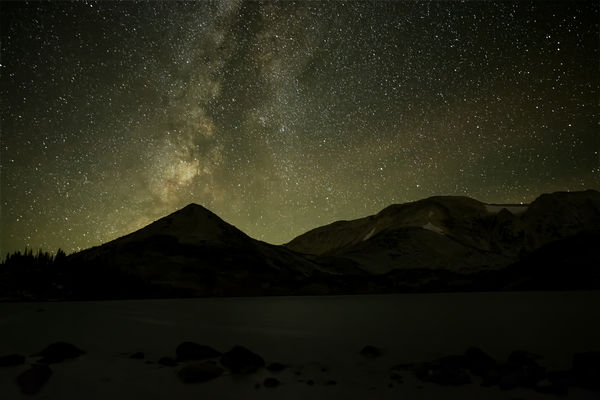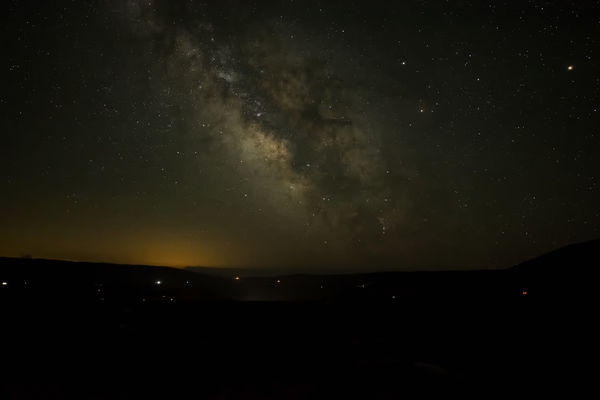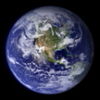Eliminating star trails
Feb 1, 2017 21:18:56 #
Thanks S, I have 11,000 ft about 45 min away but there is 10-13' if snow on them right now. Just waiting for July when they open the roads!
Feb 1, 2017 21:26:18 #
Shootist wrote:
Thanks S, I have 11,000 ft about 45 min away but there is 10-13' if snow on them right now. Just waiting for July when they open the roads!
You're welcome and if there's anything I can do please feel free to ask, but also get on the Astronomy Section and look at the software I suggested as they have their own forums as well. You may even find someone in your area running into the same problems that can offer solutions. Keep at it! S-
Feb 1, 2017 21:27:50 #
Thanks Nikonian72. There is so much to learn in photography. I am sure that I will get there in the future. Having reviewed the techniques there I realize that I will need to spend more time there than I can justify right now. They are real specialists and I am in awe of their work.
Feb 2, 2017 14:09:42 #
Shootist wrote:
Using the shutter speed and 500 rule (some say 600... (show quote)
The sky moves. Regardless of the exposure, short or long, you will have some degree of trailing unless you are using a tracking mount. The 500 rule is simply a guideline to estimate an exposure where the average person won't notice the star trailing.
You can eliminate minor star trailing in postprocessing. It is actually quite easy in Photoshop and several astrophotography packages have actual star shape utilities to clean up star trailing due to both poor tracking and/or field rotation.
bwa
Feb 2, 2017 14:35:25 #
Thanks St3vM3, Your encouragement is a real pleasure to receive. The reason I posted was to get my exposure time up while minimizing noise and star trails.. I really want to get into the techniques discussed in the Astro section of UHH and will get there eventually. At this time I am trying to work on other techniques such as bird and wildlife, generally knowing the full capacity of my equipment etc. I am spending some time on the limits of single shot raw night photos. The two photos attached to this comment demonstrate my problem; 8 sec exposure wide open and 30 sec wide open. As you can see it is an issue of foreground detail vs acceptable star trailing using only one exposure and no stacking or registering. Eventually I will get into registering and stacking but at this moment it is an a desire to push my equipment and PP to their limits. I realize these photos are not an apples to apples comparison but my goal is to get the foreground detail of the first example and the noise levels of the second to be as close as possible with minimal star trailing. I realize that this is a little like searching for a unicorn but...nothing tried, nothing gained. Again, you have been more than patient with giving your time and experience to me.
PS. The first photo was taken at about 10,000 ft and the second at about 8,000 ft in the Medicine Bow NF near Laramie WY.
PS. The first photo was taken at about 10,000 ft and the second at about 8,000 ft in the Medicine Bow NF near Laramie WY.
Nikon D7100 16mm 30 sec f2.2 +0.3 EV ISO 6400

(Download)
Nikon D7100 16mm 10 sec f2.2 ISO 1600

(Download)
Feb 2, 2017 14:46:13 #
An interesting pursuit, this. I like photo1 here ...... captivated my interest straight off.
Feb 2, 2017 16:16:10 #
Shootist wrote:
Thanks St3vM3, Your encouragement is a real pleasu... (show quote)
You're welcome of course, but we're all here to help it just happened that I've been there done that and know it well. As for the rest I applaud you for working to be an all around photographer and think you will be amazed at how what you think are two different things actually work to help one another, like macro and landscapes for instance, but not exclusively those two for any reason. The one problem I've noticed with long exposures it sensor heat build up that pushes more noise. There are a few ways around some of it, but for most stacking shots is the best solution and it's easy to do as well. Those two software packages make it even easier. And I wish I could remember the name of the article, but I read something a year or so ago about shooting the milky way in light pollution and using a technique like underexposing the image the pulling out the detail in post production. I remember it wasn't intuitive when I first read it, but it made a lot of sense in practice and made night photography a lot easier. I'll look for it, but the point is read everything, watch all the videos, ask as many questions as you can, and never, never, never stop exploring the boundaries of photography and how you can do more!
May you always find the light! S-
Feb 2, 2017 16:23:37 #
Bob,
Thanks, I am fortunate to live in an area that is amazingly diverse in its opportunities and challenges for photography. And being retired it keeps me occupied and out from under my wife's feet, for which she is grateful.
Thanks, I am fortunate to live in an area that is amazingly diverse in its opportunities and challenges for photography. And being retired it keeps me occupied and out from under my wife's feet, for which she is grateful.
If you want to reply, then register here. Registration is free and your account is created instantly, so you can post right away.


